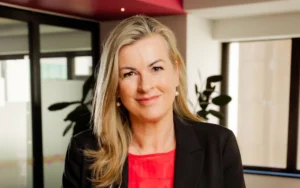For investing, as in racing, always hedge your bets
There have been plenty of reasons to visit a bookie recently, given the Melbourne Cup Carnival and the US election. Financial commentators provide a rather dull set of probabilities on what the result on the latter could be and a predictable list of winners and losers.
One trend that looks set to continue is the weakening USD though, as always, the ride is likely bumpy. At this time there is a mismatch between Treasury’s cash holding and the pace of bond-buying from the Federal Reserve, creating a short-term USD liquidity squeeze. Yet it no longer has the cache of a higher-yielding currency: its deficits are breathtaking in scale and its economic dominance may well be undermined by partisan politics that refuses to resolve major issues. Longer-term prognosis for the USD remains on the downside. Given that central banks have rates constrained by ball-and-chain, many investors prefer to express their views on rates in the currency markets, which are more volatile.
Forecasts have the AUD/USD rate in the $0.75-$0.80 range for end 2021, while largely flat against other currencies. The outsider in the race is the GBP, considered significantly undervalued but handicapped by Brexit and seemingly incompetent handling of COVID.
While many sensibly reduced the unhedged positions earlier in the year, currency risk remains a feature of many investment options. Unhedged holdings have been a good way to buffer the downside in the event of financial traumas. To fully hedge all developed-market exposure removes that option. As active funds are almost always one or the other, it leaves it to ETFs to separate the USD and other DM currency allocations via a hedged S&P 500 and unhedged ex-US.
The consequences of a weaker USD should see US investors take more interest in so called ‘international options’. Home bias in the US has paid off in spades, yet with the option of another 3%-5% return from currency, the lagging ex-US developed markets may have greater appeal. The most compelling region would be Emerging Market equities, where valuations are not over-stretched and the policy risk has mostly abated. As importantly, there are the ever-popular tech stocks and another group of less-well-known higher-growth companies in EM that are somewhat absent in ex-US DM.
EM debt also gets a tick. Yields are relatively attractive and USD-denominated debt becomes that little bit easier to repay. Elsewhere, credit markets are rebasing the cost of hedging when trading international debt. While there was a large interest rate differential, the cost of the currency hedge often made the option unviable.
Commodities tend to do well in periods of weakening USD and gold in particular. That said, the degree of potential upside is limited by expectations of a benign movement in exchange rates rather than a rout.
It leaves a tricky set of decisions for Australia-based investors. Favoured local stocks with US based earnings will see translation dumb-down their growth rates – healthcare, James Hardie, and the like.
Recasting global portfolios is tough, full hedging may not be the best, nor possible given that many funds don’t offer hedged options. EM is a somewhat obvious place for the marginal dollar.
Global fixed income may be easier outside EM. Bonds are not attractive anyway and credit spreads are also back to tight levels. That leaves global alternatives, where hedging is infrequent. Absent great ideas to fill the blank space left from decent risk free assets, tolerating currency risk may be the only option.











